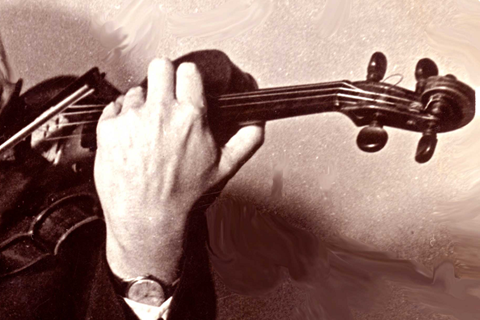The first in a two-part article on techniques and tricks to loosen your hands and free up your instrument hold by Gwen Thompson-Robinow

The following is an extract of a longer article in The Strad’s May 2018 issue. To read further, download now on desktop computer or via the The Strad App, or buy the print edition
Thumbs are essential elements of string playing. When I was a violin student, I realised that my technique and my ability to express musical ideas were being held back because my teachers never spoke to me specifically about my thumbs – I suppose because it’s so difficult for a teacher to see what our thumbs are doing when we play.
They would say to me, ‘Try not to squeeze the neck!’ – but they rarely gave me any exercises to help me find the right feeling. When I began teaching at a university, I was 22 years old and my students were all at very different technical levels. None of them could tell me anything about their thumbs or how they used them: they could only tell me that they felt tight, their shoulders hurt, or they thought they might be getting tendinitis.
By that time I had studied with Jascha Heifetz, Josef Gingold and Ivan Galamian – the whole gamut. I decided to write down for my students everything I could remember any of my teachers having told me about the thumbs.
ANATOMY OF THE HAND
It is important to understand the relationships between the hand and wrist bones: the base joint of the thumb connects flexibly to the wrist bones, while the bones supporting the palm are fixed. Cross your thumb over your palm and watch how it moves. Keeping this mobility in mind will help you to play while your thumb remains flexible and independent from your fingers.
If you have a piano, try a contrary motion scale, beginning on middle C, playing first the thumbs together, then the second and third fingers all at once, then the thumbs again, as so on; then do the same with the fingering 1 – 2, 3 and 4 together – 1 (not 5). This is good for thumb flexibility and independence because the thumbs have to move underneath the other fingers each time.

THE LEFT-HAND THUMB
In Kreutzer no.11 (exercise 1), edited by Galamian, the aim is to move from first position to fifth, then back to third. Your thumb should cradle the neck and roll from side to side as needed, but otherwise remain stationary; your hand can move either side of it. You won’t be able to do this if you are pinching.
To see the full article with further exercises and repertoire examples, download The Strad’s May 2018 issue on desktop computer or via the The Strad App, or buy the print edition

Gwen Thompson-Robinow, author of The Embodied Violinist, is Member of the Order of Canada, private teacher, ex-head of strings at the Vancouver Academy of Music and ex-string coach of the National Youth Orchestra of Canada.
She studied with Frank Simons, Josef Gingold, S.C. Eckhardt-Gramatté, Ivan Galamian, Jascha Heifetz










































No comments yet